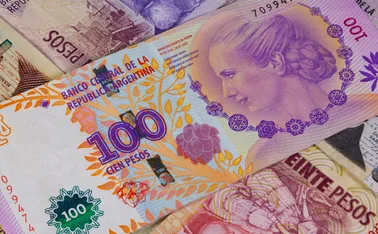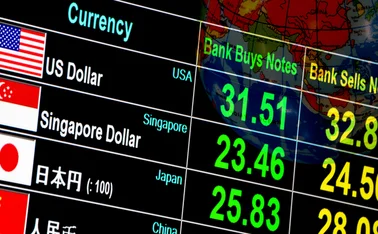

Renminbi in central banking 2022
On May 14, 2022, the International Monetary Fund (IMF) announced it was increasing the weighting of the dollar and renminbi in the special drawing rights (SDR) – an international asset created by the IMF in 1969 to supplement its member countries’ reserve assets.
The dollar’s weighting rose to 43.38% and the renminbi’s to 12.28%. The formula for SDR weight looks at each currency’s share in exports, official reserves, foreign exchange turnover, international bank liabilities and international debt securities. In the IMF’s most recently available data covering the second quarter of 2022, the dollar made up around 55% of FX reserves and the renminbi around 2.7%.
Last year, Central Banking looked at the impact the addition of the renminbi to the SDR basket has had on internationalising the Chinese currency. This year’s report looks more closely at some of the economic forces at play affecting parts of the SDR formula, with a focus on the renminbi’s share of central bank reserves.
Central bank reserve managers convened in June and discussed geopolitical developments and China’s macroeconomic outlook, as global inflation rises. Subsequently, reserve managers from Africa, the Americas, Europe and the Middle East discuss the benefits and challenges of investing in renminbi, how they think China’s economy will develop in the short to long term, as well as details about their own allocations.
A potentially important development is the Regional Comprehensive Economic Partnership (RCEP), a free trade agreement between 15 Asia-Pacific countries, which took effect for most members earlier this year. The RCEP will reduce tariffs and establish common investment, e-commerce, intellectual property, competition and government procurement rules.
At the centre of the RCEP sits China, the world’s largest exporter and second-largest economy. Jimmy Choi asks if the deal will support the use of renminbi in settlement and as a reserve currency.
Triffin’s dilemma represents the conflict of economic interests that arises when a national currency plays a role as an international public good, for countries whose currencies serve as global reserve currencies. However, the SDR has “the characteristics and potential of a supra-sovereign reserve currency,” a People’s Bank of China spokesperson tells Central Banking, “which is helpful to alleviate the Triffin problem”.
Central Banking investigates the impact the renminbi’s increased weight and the $650 billion increase in SDR have for the role of the Chinese currency in reserve management. At this point in the story, the currency’s share of FX reserves is increasing, incrementally.
Only users who have a paid subscription or are part of a corporate subscription are able to print or copy content.
To access these options, along with all other subscription benefits, please contact info@centralbanking.com or view our subscription options here: subscriptions.centralbanking.com/subscribe
You are currently unable to print this content. Please contact info@centralbanking.com to find out more.
You are currently unable to copy this content. Please contact info@centralbanking.com to find out more.
Copyright Infopro Digital Limited. All rights reserved.
As outlined in our terms and conditions, https://www.infopro-digital.com/terms-and-conditions/subscriptions/ (point 2.4), printing is limited to a single copy.
If you would like to purchase additional rights please email info@centralbanking.com test test test
Copyright Infopro Digital Limited. All rights reserved.
You may share this content using our article tools. As outlined in our terms and conditions, https://www.infopro-digital.com/terms-and-conditions/subscriptions/ (clause 2.4), an Authorised User may only make one copy of the materials for their own personal use. You must also comply with the restrictions in clause 2.5.
If you would like to purchase additional rights please email info@centralbanking.com test test test







